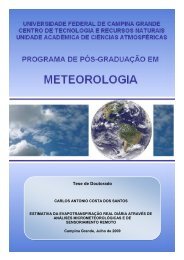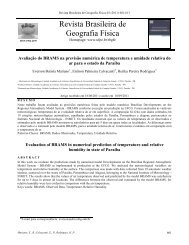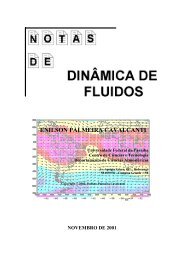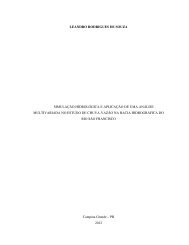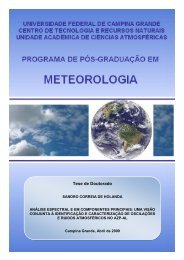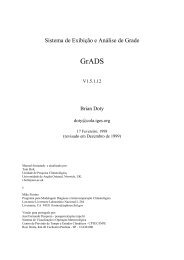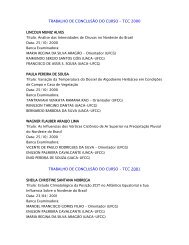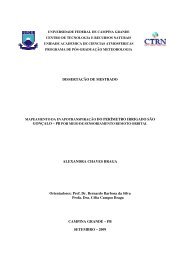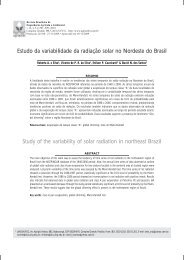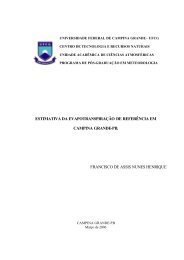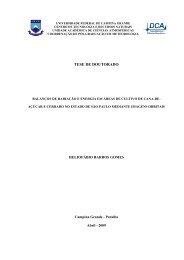You also want an ePaper? Increase the reach of your titles
YUMPU automatically turns print PDFs into web optimized ePapers that Google loves.
2. What time interval does the data represent? (i.e., does the posted time represent theend of the measurement period, the center of the measurement period, or thebeginning of the measurement period?)In the example above, DST was applied and the data represent averaged values over thehour ending at the reported time. For example, 11:00 AM data represents the average ofvalues from 10:00 AM – 11:00 AM.B-2. Instantaneous Wind Speed and ETr CalculationThis section describes how to determine the instantaneous wind speed at the image timeusing the weather data. Reference ET (ET r ) can be determined by the same method.(1) Calculate the satellite overpass time in local standard time (i.e., without applying thedaylight saving time):t image (Local Time) = GMT + Correction(2) Determine the weather time periods to use for interpolation. Quite likely, the weatherparameter for the instantaneous image time will need to be interpolated from averagesrepresenting two time periods. A general formula to determine which time periods to usein the interpolation is the following:⎡t1⎤t +⎣ ∆t2⎦= t + timage(local time)1 = int ⎢+ − Flagperiod⎥ ∆tFlagDSTt 2 1 ∆where;t1 = time identifier for the first weather period in hourst2 = time identifier for the second weather period in hours∆t = length of weather period in units consistent with t1 and t2 (i.e., hours)timage (local time) = the satellite image time (local time, with no adjustment fordaylight savings)Flagperiod = a flag for the way that the weather data period is represented by its “timelabel”. Flagperiod = 0 if the time label is the endpoint of the weather dataperiod; = 1 if the time label is the beginning of the weather data period; =0.5 if the time label represents the midpoint of the weather data period.FlagDST = a flag for use of DST in the weather data set. FlagDST = 0 if no DST isused and FlagDST = 1 hour if DST is used in the weather data set.(3) Estimate the instantaneous wind speed applying a simple linear interpolationassumption.59



